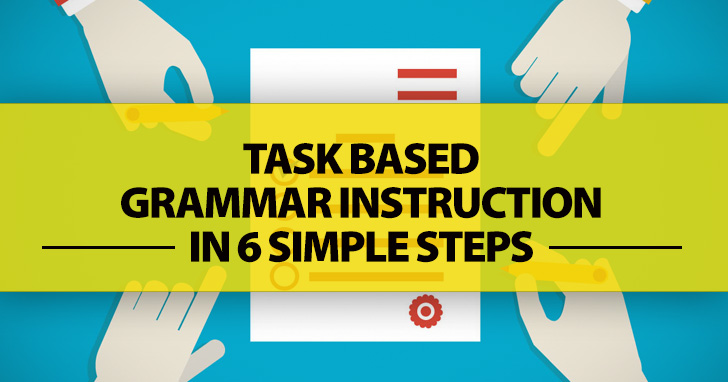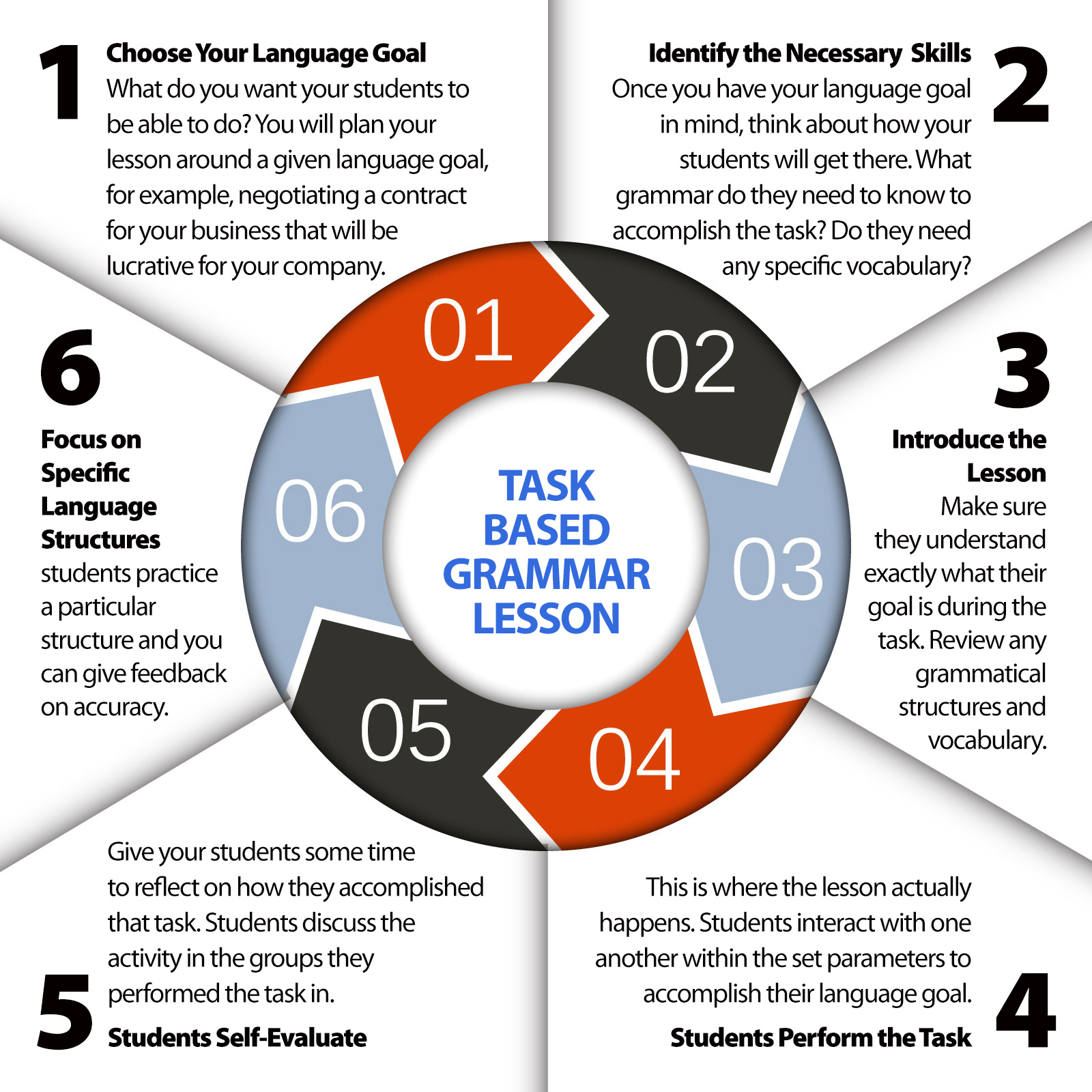Present, Practice, Produce: 4 Go to Strategies for Teaching Language Concepts


I go. You go. He goes. We go. You go. They go. Boring, and not very popular these days. But even though we have moved on from choral conjugations, sometimes our grammar instructions is still on the theoretical side and not as practical for our students as it can be. Task based grammar instruction is a different, and nontraditional, approach to teaching. It focuses on the task or the reason for using language rather than specific language skills or rules. It’s far from rote conjugations! If you have never heard of task based grammar instruction or you have never tried it, here’s everything you need to know to give it a try today.
Task based grammar instruction does what it sounds like. It focuses on a language task rather than the theory of grammar. Task based grammar asks, “How can I accomplish the task set before me?” The language used during the task is simply a means to an end. Often, the syllabus for a task based grammar class does not list specific grammar points that teachers plan to cover in the semester. Rather, it lists different language tasks that students should be able to accomplish by the end of the semester – negotiation, problem solving, interviewing, etc. The advantage to task based instruction over traditional grammar instruction is that accomplishing a language task is more like real life language situations than performing grammar exercises. This type of instruction stresses communication, using language to reach a goal, and using the language we know to accomplish a task is what real life language use is about.
Unlike traditional grammar instruction, in task based grammar instruction, the first goal is language fluency, and accuracy comes later. Traditional models more often focus on accuracy first and then move toward fluency after grammatical consistency is achieved. Letting students make incorrect grammar choices for the sake of fluency is sometimes uncomfortable for language teachers whose natural instinct it is to correct any observed errors, but that often happens in task based grammar instruction.
When you instruct using task based grammar, your goal is to create a situation in which students must use a given language structure to accomplish their task, but the first priority is the language task and not the grammar. This means that every language activity has to have a communication goal – solving a problem, reaching an agreement, explaining a concept, etc. The goal will NOT be to use a particular grammatical structure or set of vocabulary.


What do you want your students to be able to do? You will plan your lesson around a given language goal, for example, negotiating a contract for your business that will be lucrative for your company. Both parties in the language exercise should have a different goal, so while one company is trying to reach an agreement that will benefit them financially, the other company will be doing the same for their company. Ultimately, the language users will need to meet somewhere in the middle for their agreement by using any language strategies at their disposal.
Once you have your language goal in mind, you will need to think about how your students will get there. What grammar do they need to know to accomplish the task you will assign them? Do they need to know specific vocabulary? In this example, your students will need to know specific business vocabulary, but they will also need to negotiate using polite suggestions (What if my company did A for you and your company did B for us?) and use the conditional structure when they ask about their partner’s willingness to agree to terms. (Would you supply the materials for $3000 instead of $5000?) In this case, students might also need to write up a contract defining their agreement. If so, they will also need to write their plans using future tenses and business appropriate language.
Introducing the lesson to your students will have two parts. First, you will make sure they understand exactly what their goal is during the task, in this case, what each company is trying to achieve in the agreement. After you have explained the goal, you will review any grammatical structures and vocabulary that will be necessary to accomplish the task. You will not have your students practice the different grammar points in isolation from the main goal of the lesson. (That is, they won’t do exercises at their seats or with a partner specifically designed to practice a given grammar point.)
This is where the lesson actually happens. Students interact with one another within the set parameters to accomplish their language goal. These language tasks might be playing a game, sharing an experience, solving a problem, or participating in a role play that requires problem solving. While they do the assigned language task, they will likely use the grammar structures you presented in step three, but they do not have to. The goal of the task is to achieve the goal, and as long as students accomplish that the task is successful. It doesn’t matter how they got there. At this point, your students might also make mistakes with the grammatical concepts you introduced to them. Do not correct them. Encourage students to use language fluently even if it comes at the cost of accuracy.
After the language task is accomplished, you should give your students some time to reflect on how they accomplished that task. Let them discuss the activity in the groups they performed the task in. Have students write out how they accomplished the language goal, whether they used the grammatical structures you presented or not, and what other strategies they used. Then have the groups share with the rest of the class how they accomplished their goals either orally or in writing.
The final step in presenting a task based grammar lesson is taking time to focus on the grammatical points at hand. This final stage of the lesson is where students practice a particular structure and you can give feedback on accuracy. This looks more like traditional grammar classes, but it comes at the end of the lesson and isn’t emphasized at the cost of fluency.
Task based grammar instruction isn’t for every ESL teacher or class, but knowing how to present a lesson in this style is something everyone would benefit from knowing. If you try a lesson following the six steps above, you might find out you like this instructional model, or you might find that you hate it. Either way, you are developing more as a professional and have another tool in your toolbox should you choose or need to use it.
Would you do it again?